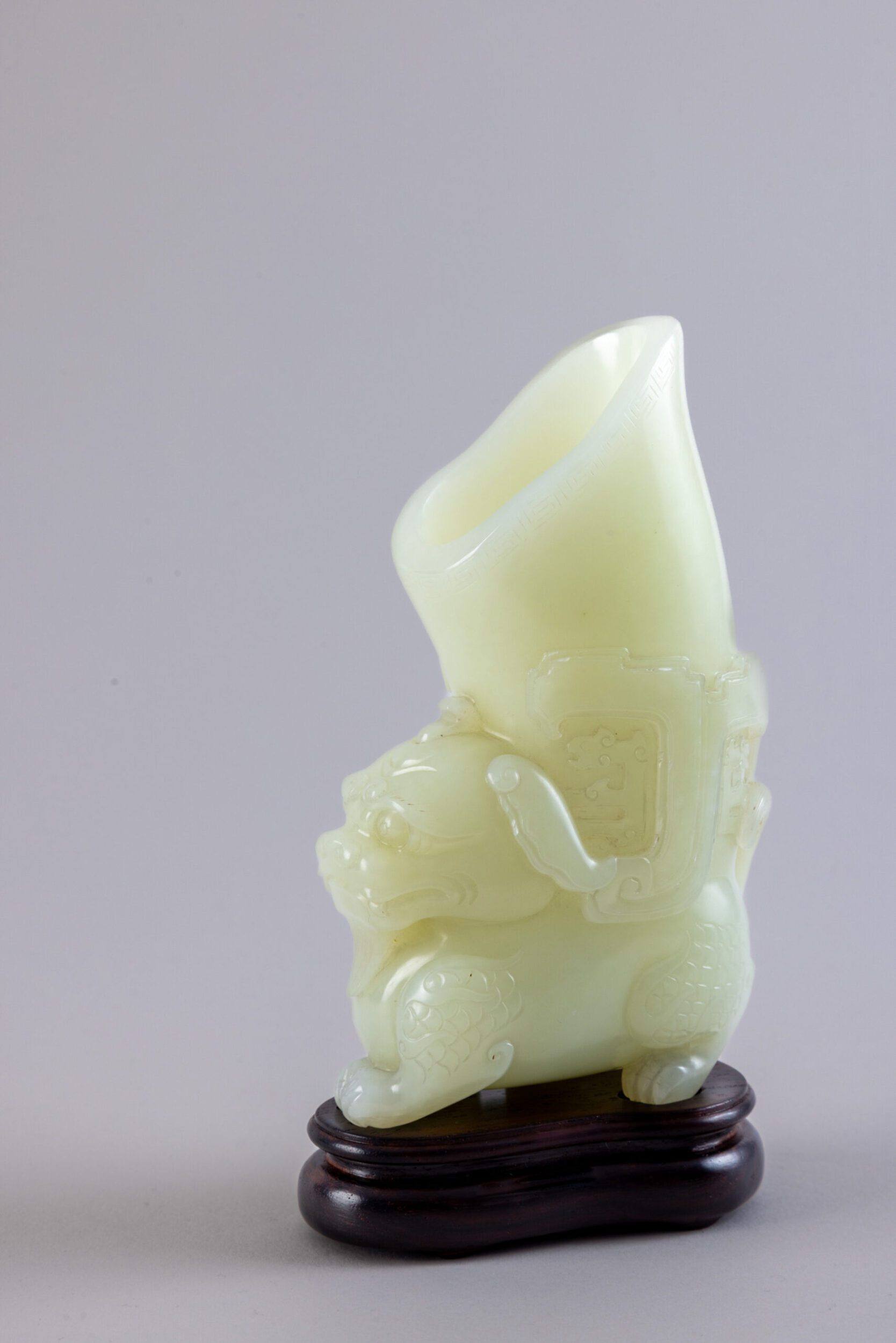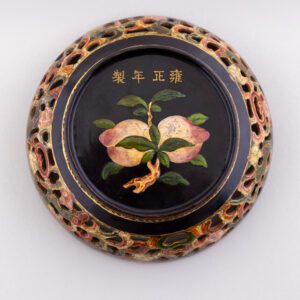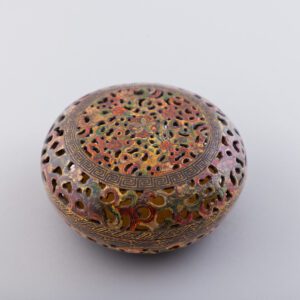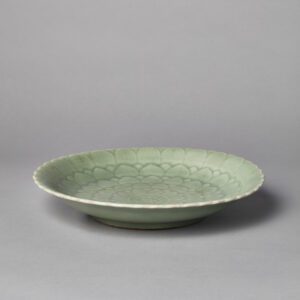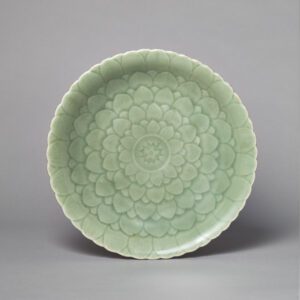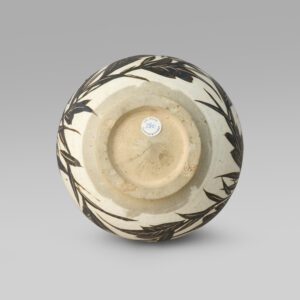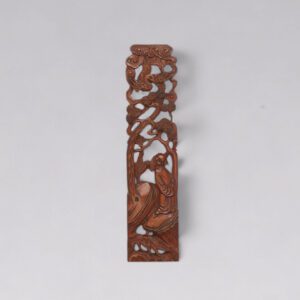The foot carved in the shape of a single-horned ‘bixie’, with intricate details paws and on the lobed ears. The well-carved and hollowed rhyton decorated on the exterior in low-relief with a frieze of archaistic scrolls, the rim with a narrow band of key fret.
A jade ‘Bixie’ rhyton (Qianlong period, 1736-1795)
Description
Dimensions: 13.1cm high (without stand), 7.7cm wide
Provenance:
A private Taiwanese collection
The foot carved in the shape of a single-horned ‘bixie’, with intricate details paws and on the lobed ears. The well-carved and hollowed rhyton decorated on the exterior in low-relief with a frieze of archaistic scrolls, the rim with a narrow band of key fret.
The rhyton, or drinking vessel, originated in Western antiquity and was made from various materials such as pottery and bronze. It is likely that these vessels were introduced to China during the early Han dynasty (206 BC – 220 AD). An intricate jade rhyton from this period was discovered in the tomb of the King of Nanyue in Guangzhou. A Ming dynasty (1368–1644) example from the Hotung collection is housed in the British Museum. A similar, larger rhyton was featured in the 1981 Spink & Son Exhibition of Fine Jade.
